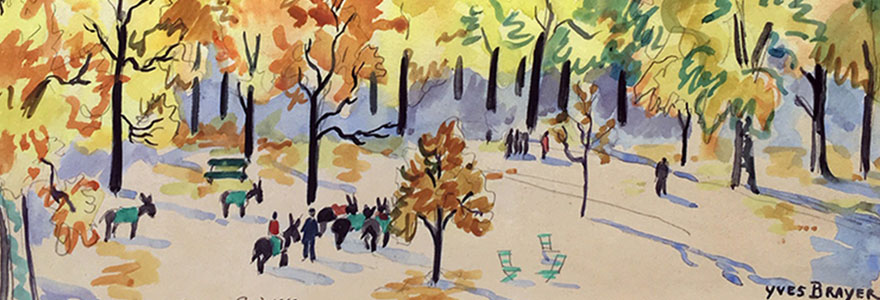Yves Brayer is regarded as one of the most celebrated present-day French painters. While he adhered to his metaphorical traditions, his love for art was augmented by his personal vision. In fact, his work proved to be incredibly diverse, for, in addition to his popular landscape, he also painted several canvases, still images and portraits. Furthermore, Yves Brayer artist was extremely into all techniques at his disposal, as illustrated at www.estades.com.
Brayer’s Early Life
Yves was born in Versailles in 1907 and spent most of his early years in Bourges. His mother discovered that Brayer has a fantastic talent for drawing at a very tender age. As a result, she decided to enrol him at the prestigious Bourges School of Arts. His father was an officer in the French army and was reallocated in Paris in 1925.
As years passed, Yves Brayer artist continued to paint and draw. Brayer acquired his studies at La Grande Chaumiere and the academies of Montparnasse and later graduated from the Ecole des Beaux-Arts. Brayer started to exhibit his thrilling works at the Salon des indépendants and Salon d’automne after inspiration from the best artists, like Sculptor Robert Wlérick and Jean-Louis Forain.
Good things happened in 1927 as the government awarded him a scholarship that allowed him to travel to Spain to study. While in Spain, he discovered a lot about the Masters of the Prado Museum. Besides, he toured Italy and Morocco. In the end, he settled in his two favourite areas, Camargue and Provence.
Yves Career
In his career as a painter, he was attracted by reality's representation. Due to this, he was against the 19th and 20th centuries’ artistic movements. Diversity and richness differentiate his exemplary work. In simple terms, Brayer was an engraver, painter, theatre decorator and illustrator. He excelled in oil painting, watercolour, drawing, engraving and lithography.
By utilising plenty of techniques, he authorised the over-the-top creation of landscapes, still lifes, figures and large compositions. In 1957, he was elected as a member of the Academy of Fine Arts as well as the Grand Prix de Rome. To date, he is regarded as one of the École de Paris pioneers.
His International Trips
After ending his Spanish black period, the ochre and the red Italian period, Yves diversified his work by introducing pale yellow, blue and green. As one of the greatest adventurers, he loved to seize the rhythms and light of the many nations he toured. He used to come back with some fantastic watercolours and drawings after visiting these countries.
From 1963 onwards, his travels were able to take him further and further away. During this time, he travelled to Mexico, New York and even exhibited at the Wildenstein Gallery. Certainly, Yves had an honest and unmatched passion for Provence’s Mediterranean landscape. Perhaps, its wild and pure nature fascinated him.
To ensure his legacy lives on, there is a museum named after him, ‘the Yves Brayer museum.’ The museum is located in Les Baux-de-Provence, and it opened its doors to the public in September 1991. You will find hundreds of drawings, watercolours and oils in this museum. Brayer’s work is part and parcel of the Estades Gallery’s permanent collection. It has been here since 1990 and can be found in the Gallery’s four locations in Lyon, Paris, Baden-Baden (Germany) or even Toulon.
His Late Years
In 1977, Yves was made the custodian of the Musée Marmottan in Paris. He was at the helm for 11 years. Yves breathed his last in 1990 in Paris.
